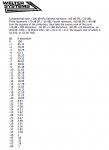I have played a pure sine wave 1000hz test tone through multiple different speakers to multiple different microphones. When I analyze the recorded sound file, i now see a frequency at 1000hz 2000hz 3000hz 4000hz and so on until it dissipates. if i play a 2000hz tone i will see a 2000hz 4000hz 6000hz 8000hz etc. I am assuming that this is do to the general properties of any given speaker. I am trying to test the recording device. So how do I play a pure test tone without the use of a speaker ?



